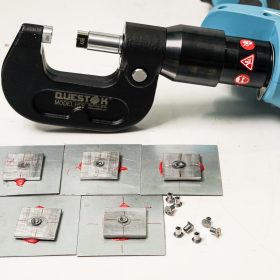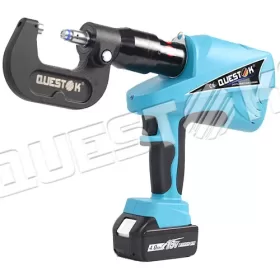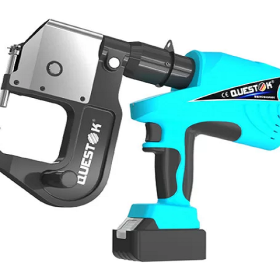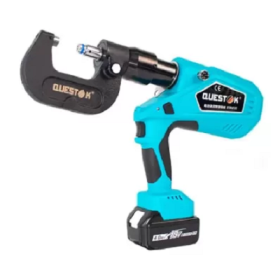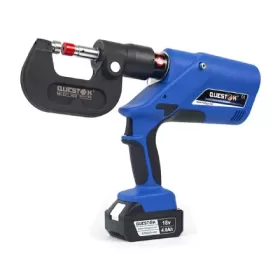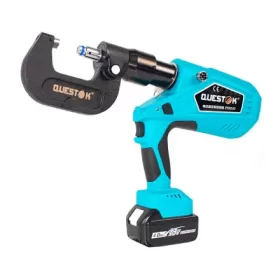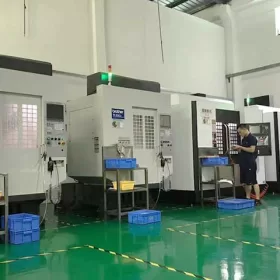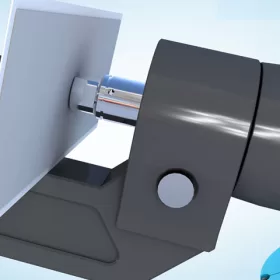Designing Efficient Joints with Electric Self-Piercing Rivet Guns
Introduction
Electric self-piercing rivet (ESPR) guns have revolutionized the way joints are fastened in various industries. They offer numerous advantages, including faster assembly times, reduced weight, and improved joint strength. This article explores the key considerations for designing efficient joints using ESPR guns, covering aspects such as material selection, rivet size, and joint configuration.
Material Selection
The material combination used in the joint is crucial for determining its strength and durability. Consider the following factors:
– Material Thickness: ESPR guns can pierce and rivet sheets of various thicknesses. Choosing the appropriate rivet size ensures the rivet shank is long enough to penetrate both sheets effectively.
– Material Strength: The materials should be strong enough to withstand the force applied by the rivet gun during piercing and riveting.
– Compatibility: Ensure the materials are compatible with the rivet material to avoid galvanic corrosion or other issues.
Rivet Size
The rivet size plays a significant role in joint efficiency. Consider the following:
– Diameter: The rivet diameter should be large enough to provide sufficient clamping force and prevent the joint from failing under load.
– Length: The rivet length must penetrate both sheets and form a secure grip. Too short a rivet can compromise joint strength, while too long a rivet can protrude excessively.
– Head Type: The rivet head can be flat, countersunk, or button-shaped. The appropriate head type depends on the desired surface finish and strength requirements.
Joint Configuration
The configuration of the joint influences its load-bearing capacity and overall efficiency. Consider the following factors:
– Joint Type: ESPR guns can be used to create various joint types, including lap joints, tee joints, and flange joints. Each type has its own load-bearing characteristics.
– Rivet Spacing: The distance between rivets affects the joint’s strength. Adequate spacing ensures the rivets are sufficiently close to share the load but not so close that they interfere with each other.
– Access: Consider access to the joint area for the rivet gun. Ensure there is enough space for the gun to maneuver and insert the rivets properly.
Additional Considerations
Besides the aforementioned aspects, additional factors can contribute to joint efficiency:
– Process Control: Properly calibrating the ESPR gun ensures consistent clamping force and prevents damage to the materials.
– Quality Control: Implementing quality control measures such as rivet pull tests helps ensure the integrity of the joints.
– Cost Optimization: Optimize rivet size and spacing to minimize material and labor costs while maintaining joint strength requirements.
Conclusion
Designing efficient joints using ESPR guns involves meticulous consideration of material selection, rivet size, and joint configuration. By adhering to these principles, engineers can create robust and reliable joints that meet the demands of various applications. ESPR technology continues to advance, unlocking new possibilities for innovative joint designs and enhanced efficiency in manufacturing processes.
- Company News
- Industry News
- Tag
- Tags
-
The Advantages of Questok Rivet Guns: Precision, Efficiency, and Durability
In industrial fastening applications, the choice of tools directly impacts productivity, safety, and long-term cost-effectiveness. Questok rivet guns have emerged as a standout solution for professionals across aerospace, automotive, and construction sectors. Combining advanced engineering with user-centric design, these tools deliver unmatched performance. Below are the key advantages that make Questok rivet guns a preferred choice:
-
Rivet Gun FAQ
Rivet Gun FAQ-SPR
-
Fast Assembly and Repair With Cordless Solid Rivet Gun
Questok cordless solid rivet gun stands out as a pivotal innovation, merging portability with power to facilitate efficient and effective fastening in a myriad of applications.
-
Redifine The Role of Self-piercing Riveting Gun Machine
Self-piercing riveting adopts high-speed mechanical fastening skill that joins thin sheet materials, typically steel and aluminum alloys.
-
The Latest Innovations in Clinching Tool Design
Explore the latest innovations in clinching tool design, redefining precision, efficiency, and versatility in material joining.
-
The Application and Maintenance of Self-Piercing Rivet Guns
Delve into the applications of self-piercing rivet guns in the automotive and aerospace industries and reveal the essential maintenance practices that ensure their accuracy and efficiency.
-
Rivetless Riveting Gun for Ventilation Duct Projects
The ventilation duct rivetless gun is a tool for riveting ventilation ducts without rivets.
-
Guide to Using Self-Piercing SPR Riveting Gun
In the automotive industry, self-piercing SPR (Self-Piercing Rivet) riveting guns are commonly used for joining metal components in vehicle bodies, including BMW vehicles.
-
Rivet Gun FAQ
Rivet Gun FAQ-SPR
-
Versatile Fastening- Applications of the Handheld Rivet Gun Across Industries
In the realm of fastening, the handheld rivet gun stands as a testament to ingenuity and versatility. Its ability to effortlessly join materials with sheer strength and permanence has revolutionized manufacturing and construction processes, leaving an enduring mark on diverse industries. Aerospace: Where precision and reliability are paramount, the rivet gun shines. In aircraft assembly, […]
-
Time-Saving Tools- Speeding Up Projects with Electric Blind Rivet Guns
In the whirlwind of project deadlines, every minute counts. But what if there was a tool that could dramatically reduce assembly time, giving you an edge in the race against the clock? Enter the electric blind rivet gun: your secret weapon for lightning-fast and effortless riveting. Electric blind rivet guns are the ultimate time-savers for […]
-
Streamlining Fastening- How an Electric Blind Rivet Gun Enhances Efficiency
Introduction In the realm of manufacturing and assembly, fastening plays a crucial role in securing components and ensuring structural integrity. Traditional manual rivet guns, while reliable, are often time-consuming and labor-intensive. The advent of electric blind rivet guns has revolutionized the fastening process, significantly enhancing efficiency and productivity. This article delves into the benefits of […]
-
Why Choose a Universal Self-Piercing Riveting Gun for Your Projects?
In the realm of construction and fabrication, riveting guns stand as indispensable tools for creating secure and robust connections. Among the various types available, universal self-piercing riveting (SPR) guns have emerged as a game-changer due to their versatility and efficiency. This article will delve into the compelling reasons why choosing a universal self-piercing riveting gun […]
-
Why Choose Stainless Steel Hollow Rivets for Your Projects?
In the world of industrial manufacturing, choosing the right fasteners for your projects is crucial for ensuring longevity and reliability. Among the many options available, stainless steel hollow rivets stand out as a superior choice for a wide range of applications. This article delves into the compelling reasons why stainless steel hollow rivets are the […]
-
Top Trends in Electric Rivetless Clinching Guns
In the realm of fastening technology, electric rivetless clinching guns have emerged as a revolutionary solution for a wide range of industrial applications. These advanced tools offer several преимущества and capabilities, revolutionizing the way businesses approach their fastening needs. Adoption of Brushless Motors Brushless motors have gained significant traction in electric rivetless clinching guns due […]
-
Top Features and Benefits of Universal Self-Piercing Riveting Guns
In the realm of metalworking, precision and efficiency are paramount. Universal self-piercing riveting guns, often referred to as self-pierce riveting guns, embody these qualities, offering remarkable benefits for various applications. These innovative tools feature technologically advanced functions that enhance productivity, reliability, and overall performance, making them indispensable in industries such as aerospace, automotive, construction, and […]
